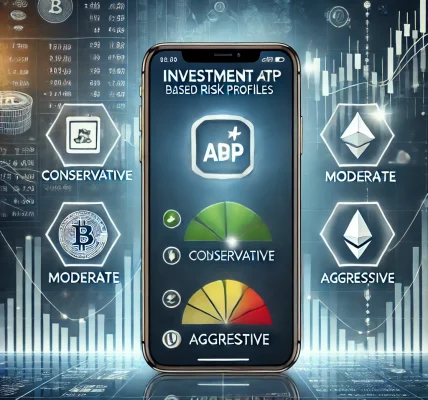Investing your hard-earned money should be a transparent and straightforward process, but many investors fall into the trap of hidden fees that investment platforms often charge. These fees can significantly impact your returns over time, making it crucial to understand where your money is going.
Investing your hard-earned money should be a transparent and straightforward process, but many investors fall into the trap of hidden fees that investment platforms often charge. These fees can significantly impact your returns over time, making it crucial to understand where your money is going.
In this guide, we’ll explore common hidden fees found in investment platforms, how they affect your investments, and tips to avoid them. By staying informed, you can make smarter financial decisions and maximize your returns.
1. Understanding Hidden Fees in Investment Platforms
Many investment platforms advertise low or zero commission trading, but that doesn’t mean they are free. Fees may be buried in the fine print, deducted in the form of account charges, spreads, withdrawal costs, and advisory fees.
Why Do Platforms Charge Hidden Fees?
- To maintain operations without visibly increasing costs.
- To remain competitive by advertising “free” or “low-cost” investing.
- To generate revenue from users who are unaware of these charges.
While these fees may seem small, they can add up over time, reducing your overall profits.
2. Common Hidden Fees to Watch Out For
A. Expense Ratios on Mutual Funds & ETFs
- What it is: A percentage fee deducted annually from your investment in mutual funds and ETFs.
- How it affects you: Even if a fund performs well, a high expense ratio can lower your net returns.
- Example: A fund with a 1% expense ratio will deduct $10 annually for every $1,000 invested.
B. Account Maintenance & Inactivity Fees
- What it is: Some platforms charge a fee for maintaining your account or if there’s no activity over a certain period.
- How it affects you: If you’re a passive investor, inactivity fees can erode your balance.
- Example: Some platforms charge $10–$25 per quarter for inactive accounts.
C. Withdrawal & Transfer Fees
- What it is: Charges for withdrawing funds or transferring assets to another brokerage.
- How it affects you: Can discourage frequent withdrawals or switching platforms.
- Example: Some platforms charge $50–$100 per full account transfer.
D. Trade Spread & Markups
- What it is: The difference between the buy and sell price of a security.
- How it affects you: Even commission-free platforms make money through spreads, meaning you may pay slightly more when buying and get slightly less when selling.
- Example: If the spread on a stock is $0.05 per share, buying 1,000 shares means an extra $50 cost.
E. Advisory & Robo-Advisor Fees
- What it is: Fees charged by financial advisors or robo-advisors for managing your portfolio.
- How it affects you: These can range from 0.25% to 1% annually, impacting long-term gains.
- Example: A 1% advisory fee on a $100,000 portfolio means paying $1,000 per year.
F. Currency Conversion & Foreign Transaction Fees
- What it is: Fees charged when trading international stocks or converting currencies.
- How it affects you: Can add 2-3% per trade, making foreign investments costly.
- Example: A 2.5% foreign transaction fee on a $10,000 trade means an additional $250 charge.
G. Margin Interest & Borrowing Costs
- What it is: Interest charged when borrowing money to invest (margin trading).
- How it affects you: High interest rates can lead to unexpected losses.
- Example: Some brokers charge 7-10% annually on borrowed funds.
3. How Hidden Fees Impact Your Investment Returns
Even seemingly small fees can make a big difference over time due to the compounding effect. Here’s an example:
| Investment Amount | Annual Fees (1%) | Balance After 20 Years (Assuming 7% Returns) |
|---|---|---|
| $10,000 | $100/year | $38,697 |
| $10,000 | No Fees | $41,538 |
A 1% annual fee may not seem significant, but over time, it can reduce your returns by thousands of dollars.
4. How to Avoid Hidden Fees
✅ Read the Fine Print
Always review the fee structure of an investment platform before signing up. Look for details on expense ratios, withdrawal fees, and account charges.
✅ Choose No-Fee or Low-Cost Platforms
Many brokers now offer zero-commission trades and low-cost ETFs. Research platforms with transparent pricing.
✅ Use Tax-Advantaged Accounts
Investing through IRAs or 401(k) plans can help minimize certain fees and taxes.
✅ Be Mindful of Trading Frequency
Frequent trading can lead to higher spreads and hidden costs. Consider a long-term investing strategy to minimize unnecessary fees.
✅ Monitor Your Statements
Check your monthly and annual statements to see if you are being charged hidden fees and adjust accordingly.
5. Best Investment Platforms with Transparent Fees
| Investment Platform | Commission-Free Trading | Low Expense Ratios | No Inactivity Fees |
| Fidelity Investments | ✅ | ✅ | ✅ |
| Vanguard | ✅ | ✅ | ✅ |
| Charles Schwab | ✅ | ✅ | ✅ |
| TD Ameritrade | ✅ | ✅ | ✅ |
| E*TRADE | ✅ | ✅ | ✅ |
Choosing one of these platforms can reduce the risk of hidden fees and ensure a transparent investment experience.
Final Thoughts
Understanding hidden fees in investment platforms is essential for maximizing your returns and avoiding unnecessary costs. While fees are inevitable, being aware of them and making informed decisions can save you thousands of dollars over time.
By choosing a low-cost, transparent investment platform, keeping track of your statements, and being mindful of your investment strategy, you can protect your hard-earned money and make the most of your investments.
Key Takeaways:
✅ Always check for hidden fees before choosing a platform. ✅ Understand how different fees impact your returns. ✅ Opt for commission-free and low-cost investment options. ✅ Regularly review account statements to avoid unexpected charges.
Being financially aware and proactive is the key to successful investing. Stay informed and invest wisely! 🚀




